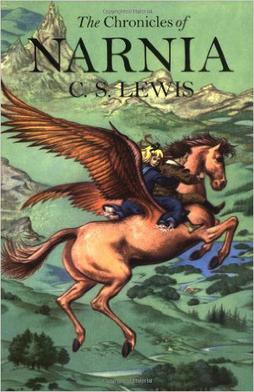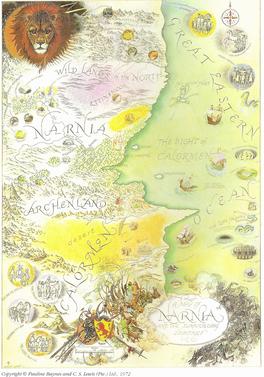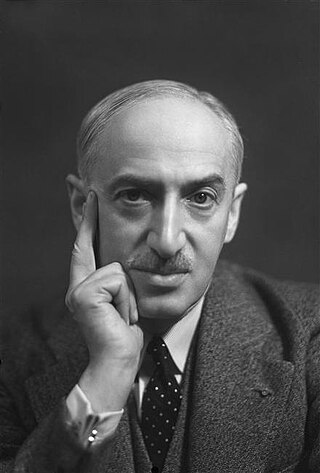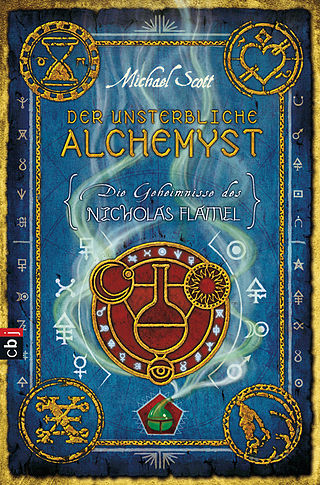
Sir Terence David John Pratchett was an English author, humorist, and satirist, best known for the Discworld series of 41 comic fantasy novels published between 1983 and 2015, and for the apocalyptic comedy novel Good Omens (1990), which he co-wrote with Neil Gaiman.

The Chronicles of Narnia is a series of seven portal fantasy novels by British author C. S. Lewis. Illustrated by Pauline Baynes and originally published between 1950 and 1956, the series is set in the fictional realm of Narnia, a fantasy world of magic, mythical beasts, and talking animals. It narrates the adventures of various children who play central roles in the unfolding history of the Narnian world. Except in The Horse and His Boy, the protagonists are all children from the real world who are magically transported to Narnia, where they are sometimes called upon by the lion Aslan to protect Narnia from evil. The books span the entire history of Narnia, from its creation in The Magician's Nephew to its eventual destruction in The Last Battle.
Shannara is a series of high fantasy novels written by Terry Brooks, beginning with The Sword of Shannara in 1977 and concluding with The Last Druid which was released in October 2020; there is also a prequel, First King of Shannara. The series blends magic and primitive technology and is set in the Four Lands, which are identified as Earth long after civilization was destroyed in a chemical and nuclear holocaust called the Great Wars. By the time of the prequel First King of Shannara, the world had reverted to a pre-industrial state and magic had re-emerged to supplement science.

Good Omens: The Nice and Accurate Prophecies of Agnes Nutter, Witch is a 1990 novel written as a collaboration between the English authors Terry Pratchett and Neil Gaiman.

Narnia is a fantasy world created by C. S. Lewis as the primary location for his series of seven fantasy novels for children, The Chronicles of Narnia. The world is named after the country of Narnia, where much of the Chronicles takes place.
Jean Marcel Adolphe Bruller was a French writer and illustrator who co-founded the publishing company Les Éditions de Minuit with Pierre de Lescure.

André Maurois was a French author.

Subterranean fiction is a subgenre of speculative fiction, science fiction, or fantasy which focuses on fictional underground settings, sometimes at the center of the Earth or otherwise deep below the surface. The genre is based on, and has in turn influenced, the Hollow Earth theory. The earliest works in the genre were Enlightenment-era philosophical or allegorical works, in which the underground setting was often largely incidental. In the late 19th century, however, more pseudoscientific or proto-science-fictional motifs gained prevalence. Common themes have included a depiction of the underground world as more primitive than the surface, either culturally, technologically or biologically, or in some combination thereof. The former cases usually see the setting used as a venue for sword-and-sorcery fiction, while the latter often features cryptids or creatures extinct on the surface, such as dinosaurs or archaic humans. A less frequent theme has the underground world much more technologically advanced than the surface one, typically either as the refugium of a lost civilization, or as a secret base for space aliens.
Donald Michael Thomas was a British poet, translator, novelist, editor, biographer and playwright. His work has been translated into 30 languages.
The Independent Foreign Fiction Prize (1990–2015) was a British literary award. It was inaugurated by British newspaper The Independent to honour contemporary fiction in translation in the United Kingdom. The award was first launched in 1990 and ran for five years before falling into abeyance. It was revived in 2001 with the financial support of Arts Council England. Beginning in 2011 the administration of the prize was taken over by BookTrust, but retaining the "Independent" in the name. In 2015, the award was disbanded in a "reconfiguration" in which it was merged with the Man Booker International Prize.

Anthea Bell was an English translator of literary works, including children's literature, from French, German and Danish. These include The Castle by Franz Kafka, Austerlitz by W. G. Sebald, the Inkworld trilogy by Cornelia Funke and the French Asterix comics with co-translator Derek Hockridge.

My People Were Fair and Had Sky in Their Hair... But Now They're Content to Wear Stars on Their Brows is the debut album by psychedelic folk band Tyrannosaurus Rex. The release of the album was planned for early May but delayed until 5 July 1968 by record label Regal Zonophone.
The Geffen Award is an annual literary award given by the Israeli Society for Science Fiction and Fantasy since 1999, and presented at the ICon festival, the annual Science Fiction and Fantasy Convention, It is named in honour of editor and translator Amos Geffen, who was one of the society's founders.

George Reid Millar DSO MC was a Scottish journalist, soldier, author and farmer. He was awarded the Military Cross (MC) in early 1944 for escaping from Germany while a prisoner of war and making it back to England, which he wrote about in his 1946 book Horned Pigeon.

John Dough and the Cherub is a children's fantasy novel, written by American author L. Frank Baum, about a living gingerbread man and his adventures. It was illustrated by John R. Neill and published in 1906 by the Reilly & Britton Company. The story was serialized in the Washington Sunday Star and other newspapers from October to December 1906. Like the Oz books but unlike many of the author's other works, John Dough was issued under Baum's name rather than one of his pseudonyms. The book was popular; as late as 1919 it was selling 1500 copies a year. The 1974 Dover Publications edition features an introduction by Martin Gardner.

An escalator is a moving staircase which carries people between floors of a building or structure. It consists of a motor-driven chain of individually linked steps on a track which cycle on a pair of tracks which keep the step tread horizontal.

The Secrets of the Immortal Nicholas Flamel is a series of six fantasy novels written by Irish author Michael Scott, completed in 2012. The first book in the series, The Alchemyst, was released in 2007, and the sequels were released at the rate of one per year, concluding with The Enchantress in 2012. The cover artist for the series is Michael Wagner.
The following outline is provided as an overview of and topical guide to Narnia:
Fritz Wegner was an Austrian-born illustrator, resident in the United Kingdom from 1938.

Kesrick: An Adult Fantasy is a fantasy novel by American writer Lin Carter, the first in his series about the fictional "Flat Earth" of Terra Magica. It was first published in paperback by DAW Books in November 1982. A trade paperback edition was published by Wildside Press in February 2001, with an ebook edition following from Gateway/Orion in March 2020. It has also been translated into Italian.













